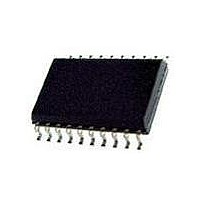ATA3741P3-TGSY Atmel, ATA3741P3-TGSY Datasheet - Page 9

ATA3741P3-TGSY
Manufacturer Part Number
ATA3741P3-TGSY
Description
RF Receiver ASK/FSK Rem. Ctrl. Rec. (IF= 600 kHz)
Manufacturer
Atmel
Type
Receiverr
Datasheet
1.ATA3741P2-TGSY.pdf
(31 pages)
Specifications of ATA3741P3-TGSY
Package / Case
SOIC-20
Operating Frequency
450 MHz
Operating Supply Voltage
5 V
Maximum Operating Temperature
+ 105 C
Minimum Operating Temperature
- 40 C
Mounting Style
SMD/SMT
Operating Frequency (max)
450000kHz
Operating Temperature (min)
-40C
Operating Temperature (max)
105C
Operating Temperature Classification
Industrial
Operating Supply Voltage (min)
4.5V
Operating Supply Voltage (typ)
5V
Operating Supply Voltage (max)
5.5V
Lead Free Status / RoHS Status
Lead free / RoHS Compliant
5. Polling Circuit and Control Logic
5.1
4899B–RKE–10/06
Basic Clock Cycle of the Digital Circuitry
When designing the system in terms of receiving bandwidth, the LO deviation must be consid-
ered as it also determines the IF center frequency. The total LO deviation is calculated to be the
sum of the deviation of the crystal and the XTO deviation of the ATA3741. Low-cost crystals are
specified to be within ±100 ppm. The XTO deviation of the ATA3741 is an additional deviation
due to the XTO circuit. This deviation is specified to be ±30 ppm. If a crystal of ±100 ppm is
used, the total deviation is ±130 ppm in that case. Note that the receiving bandwidth and the
IF-filter bandwidth are equivalent in ASK mode but not in FSK mode.
Figure 4-2.
The receiver is designed to consume less than 1 mA while being sensitive to signals from a cor-
responding transmitter. This is achieved via the polling circuit. This circuit enables the signal
path periodically for a short time. During this time the bit-check logic verifies the presence of a
valid transmitter signal. Only if a valid signal is detected does the receiver remain active and
transfer the data to the connected microcontroller. If there is no valid signal present, the receiver
is in sleep mode most of the time, resulting in low current consumption. This condition is called
polling mode. A connected microcontroller is disabled during that time.
All relevant parameters of the polling logic can be configured by the connected microcontroller.
This flexibility enables the user to meet the specifications in terms of current consumption, sys-
tem response time, data rate, etc.
Regarding the number of connection wires to the microcontroller, the receiver is very flexible. It
can be either operated by a single bi-directional line to save ports to the connected microcontrol-
ler, or it can be operated by up to three uni-directional ports.
The complete timing of the digital circuitry and the analog filtering is derived from one clock. As
seen in
combination with a divider. The division factor is controlled by the logical state at pin MODE. The
frequency of the crystal oscillator (f
defines the operating frequency of the local oscillator (f
Figure 5-1 on page
Receiving Frequency Response
-100.0
-20.0
-30.0
-40.0
-60.0
-80.0
-90.0
-50.0
-70.0
-10.0
0.0
-6.0
10, this clock cycle T
-5.0 -4.0
XTO
-3.0
) is defined by the RF input signal (f
-2.0
-1.0
df (MHz)
Clk
0.0
with SAW
is derived from the crystal oscillator (XTO) in
1.0
LO
) (See
without SAW
2.0
3.0
“RF Front End” on page
4.0
5.0
6.0
ATA3741
RFin
) which also
4).
9















